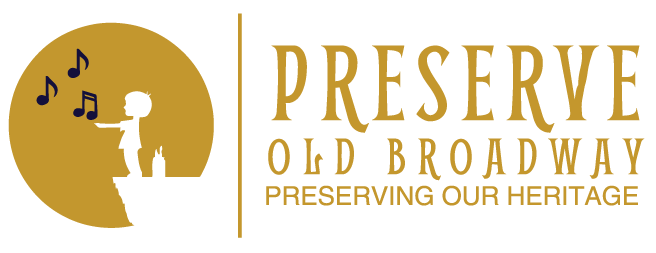African-American Secular Music–Part One
We are featuring a painting of Stephen Foster, who we will discuss later in this post.
We will start off this post with an admission: blackface offends our sensibilities in 2018; most will agree that white men should not “cork” their faces and pretend to be black. However, in 2018, we also accept the fact that African-American musical genres dominate American music.
What we have difficulty appreciating in 2018 is the fact that the use of blackface in the 19th and early 20th Centuries was the only way that African-American syncopated music could progress beyond the African-American community into the American mainstream. In fact, what may be objectionable now was accepted by the black community as a necessity if black music was to be accepted by white audiences. It is going to take two posts to explain why the use of blackface was necessary and why African-Americans accepted this practice, even if they didn’t like it. So please stay with us today and tomorrow, as we explain historical trends by illustrating a number of musical examples and performance issues. This may be slow, but we can lay out all of the salient facts for you to consider.
The first issue that we will address is the way musical innovations migrate across continents from minority groups to a wider audience.
We believe that music has no national boundaries and cannot be confined to any race or ethnicity. Romani music came from Northern India and was played by “travelers” out of their caravans all over Europe, as far west as the far coast of Ireland. The Roma were subjected to extreme prejudice and discrimination and called “untrustworthy, untrainable and untraceable.”
Nevertheless and over the objections of the ruling class of European musical scholars and musicians, Romani techniques migrated into classical, instrumental music in Hungary through the exquisite violin playing of Janos Bihari (1764-1827). Franz Liszt (1811-1886) described Bihari’s music in this way: “The tones sung by his magic violin flow on our enchanted ears like the tears…” Liszt’s book, The Gypsy in Music, provided justification for incorporation of “gypsy rhythms” into classical repertoires.
Jews were ostracized, ridiculed and murdered in Czarist Russia. Jewish refugees fled Russia and came to America, where they played their traditional music and wrote new music in the land of their new home. Americans heard this new music and fell in love with it. Was this music unique to the Jews? No. Noted musicologists have said that Cole Porter wrote the best “Jewish” music of them all.
Scotch-Irish music came to America with the Scotch-Irish migrations that fled the civil strife in what is now Northern Ireland; we now call this music “country music.” And when country music is blended with an African instrument, called the banjo, bluegrass music was created.
It is impossible to stop music at national or ethnic borders; music needs to flow from one person’s instrument to another person’s ear. It needs to grow and change as it blends with other musical sounds.
The same trend is true also for three forms of African-American music. Scott Joplin was born in Texas but wound up in St. Louis. Befriended by Louis Chauvin, he learned the nuances of ragtime music, distinguished by the oom-pah marching band style played by the pianist’s left hand and the syncopated beat played by the pianist’s right hand. Joplin’s “Maple Leaf Rag” was first published in 1899; his other rags were soon to follow, including “Paragon Rag,” “The Entertainer,” “Pineapple Rag” and “Easy Winners,” among others.
Joplin’s music was quite popular when first released, and the sheet music sold in the hundreds of thousands. Then it fell into a dormant period, only to have a renaissance in the mid-1970’s, culminating in mainstream acceptance; Joplin’s great rags were incorporated into Marvin Hamlisch’s orchestral soundtrack for the 1973 movie, The Sting.
At the same time, the “blues” started to take root, which, according to David Ewen, “was an outgrowth of the earlier sorrow songs in which black people bewailed their fate.” Starting in the 1880’s in New Orleans, this improvised form of instrumental music was made famous by Buddy Bolden and his band, using his cornet as a sounding call to musicians all over town. Soon, Joe Oliver, Johnny Dodds, Freddie Keppard, Kid Ory and Sidney Bechet turned New Orleans in the blues center of the country. New Orleans’ domination of this musical form lasted until 1917, when musicians started to float up the Mississippi toward Chicago, where Louis Armstrong became famous in the 1920’s.
It wasn’t until the mid-1920’s that blues recordings started to reach a mass audience. However, even then, most buyers of these records were African-Americans. African-American composers and musicians felt that their music should reach a larger audience, should be appreciated by white audiences and should be accepted into the concert halls where only classical music was played.
This evolution did not occur until 1924, when Paul Whiteman entered Aeolian Hall with the intent of showing a skeptical white audience that jazz was a legitimate musical form. Here are notes from the NY Times when an archived tape of the 1924 concert was found:
“Paul Whiteman’s concert of ‘jazz’ at Aeolian Hall in New York on Feb. 12, 1924, is remembered now almost entirely for one selection: the first performance of George Gershwin’s ‘Rhapsody in Blue,’ with the composer as piano soloist. The story of how Gershwin came to write it, and its reception and its impact on the musical world have been told and retold. It is the stuff of musical history – and legend.
“But the ‘Rhapsody,’ after all, takes less than 20 minutes, and Whiteman was presenting a full evening’s entertainment – and instruction; the venture was frankly educational in nature, attempting to make jazz ‘respectable’ – a goal not regarded especially kindly by some subsequent commentators, many of whom felt the effort was even anti-jazz, although Whiteman was highly regarded for using true jazz instrumentalists in his band.”
Let’s move on to the third form of African-American music. While not part of the jazz genre, minstrel music nevertheless found its origins in the syncopated music of African-American slaves outside the church. This type of music is most closely associated with Stephen Foster (1826-1864), a man with no formal musical training. When he was seven, a household servant took him to a Negro church in Pittsburgh. According to Ewen, “The shouts and spirituals he heard were so indelibly impressed on his young mind that many years later he used some of these melodies in two songs.”
Foster’s best-known song was written in 1850 and was titled “The Old Folks at Home” (or “Swanee River”). It was sold to Ed Christy to be sung by the Christy Minstrels. His last great minstrel song (and our favorite) was “Gone Are the Days” (or “Old Black Joe”) and was written in 1860, inspired by a slave belonging to his wife’s household. The pathos in this song, the beckoning of voices from beyond the grave, foreshadowed the coming of the Civil War in 1861 and Foster’s own death in 1864. He died with three pennies and thirty-five cents in scrip in his pockets.
According to Ewen, Foster was a voice of his times. “When he wrote his songs, the Negro question was disturbing the conscience of the North. This is why the minstrel show grew so popular there so quickly. By finding amusement in blackface performers, by listening to sentimental songs about the South, by watching Negro dances, Northern audiences found a safety valve for the release of passions aroused by the issue of slavery. Foster’s song classics—like the stage medium in which they were heard—reflect Northern sentimental responses to the ‘Negro question.’ “
Years after emancipation, white audiences still had not fully accepted any of these three forms of black music. The problem white audiences had with minstrel songs in 1909 was the same problem that white audiences had with ragtime and blues music in 1909; white audiences were just not ready to accept this music as “respectable” music.
One of the great performers of his time figured out a way to attract white audiences, while also freeing himself to express his own musical passions on the stage. His name was Al Jolson. Jolson needed to create a character who could sing this new type of music authentically; Jolson created Gus.

